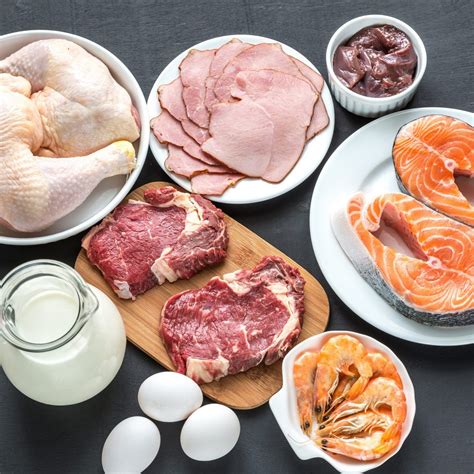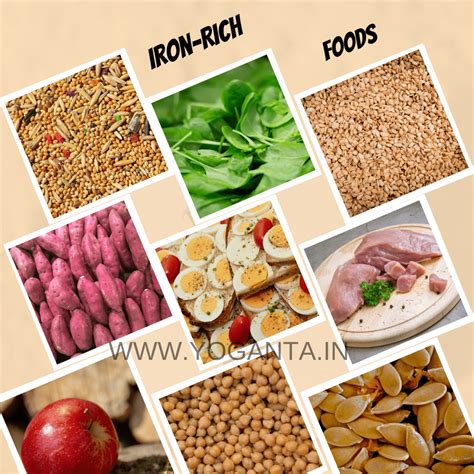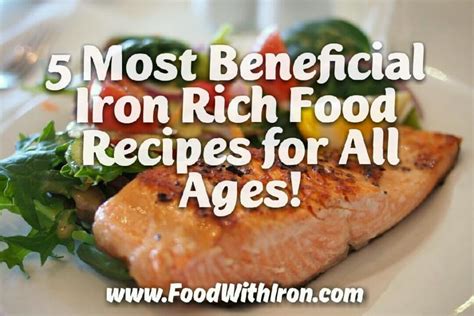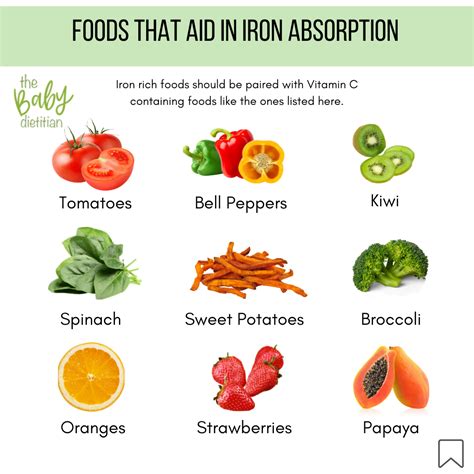Intro
Iron is an essential nutrient that plays a crucial role in maintaining healthy red blood cells, which carry oxygen throughout the body. Without sufficient iron, individuals may experience fatigue, weakness, and shortness of breath. Fortunately, there are numerous foods that are rich in iron, making it easy to incorporate this vital nutrient into your diet. In this article, we will explore the importance of iron, the benefits of consuming iron-rich foods, and provide a comprehensive list of foods that contain high iron.
Iron deficiency is a common condition that affects millions of people worldwide. It can be caused by a variety of factors, including a poor diet, certain medical conditions, and pregnancy. Iron deficiency can lead to anemia, a condition characterized by a lack of healthy red blood cells. Anemia can cause a range of symptoms, including fatigue, weakness, and pale skin. In severe cases, anemia can lead to more serious health complications, such as heart problems and poor pregnancy outcomes.
Incorporating iron-rich foods into your diet can help prevent iron deficiency and anemia. Iron-rich foods can be divided into two categories: heme iron and non-heme iron. Heme iron is found in animal-based foods, such as red meat, poultry, and fish, while non-heme iron is found in plant-based foods, such as beans, lentils, and fortified cereals. Heme iron is more easily absorbed by the body than non-heme iron, but both types are essential for maintaining healthy red blood cells.
Benefits of Iron-Rich Foods

Some of the key benefits of consuming iron-rich foods include:
- Improved energy levels and reduced fatigue
- Enhanced immune function and reduced risk of illness
- Improved cognitive function and reduced risk of neurodegenerative diseases
- Healthy red blood cells and reduced risk of anemia
- Support for healthy pregnancy and fetal development
Types of Iron-Rich Foods
There are numerous types of iron-rich foods, including animal-based and plant-based options. Some of the richest sources of iron include: * Red meat: beef, lamb, and pork * Poultry: chicken and turkey * Fish and seafood: shellfish, sardines, and anchovies * Legumes: beans, lentils, and peas * Nuts and seeds: pumpkin seeds, sesame seeds, and sunflower seeds * Whole grains: quinoa, brown rice, and whole wheat breadAnimal-Based Iron-Rich Foods

These foods are not only rich in iron but also contain other essential nutrients, such as protein, vitamins, and minerals. For example, red meat is a rich source of vitamin B12, which is essential for energy production and nerve function.
Plant-Based Iron-Rich Foods
Plant-based iron-rich foods are also essential for maintaining healthy red blood cells. These foods contain non-heme iron, which is not as easily absorbed by the body as heme iron. However, non-heme iron can still provide numerous health benefits when consumed in sufficient amounts. Some of the best plant-based iron-rich foods include: * Legumes: beans, lentils, and peas * Nuts and seeds: pumpkin seeds, sesame seeds, and sunflower seeds * Whole grains: quinoa, brown rice, and whole wheat bread * Leafy greens: spinach, kale, and collard greensThese foods are not only rich in iron but also contain other essential nutrients, such as fiber, vitamins, and minerals. For example, legumes are a rich source of protein and fiber, which can help support healthy digestion and satiety.
Fortified Iron-Rich Foods

These foods can be a great option for individuals who are looking to boost their iron intake. However, it's essential to choose fortified foods that are low in added sugars, salt, and unhealthy fats.
Boosting Iron Absorption
To get the most out of iron-rich foods, it's essential to boost iron absorption. Iron absorption can be enhanced by consuming foods that are high in vitamin C, such as citrus fruits, bell peppers, and tomatoes. Vitamin C helps to convert non-heme iron into a more soluble form, making it easier for the body to absorb.Additionally, avoiding foods that inhibit iron absorption, such as tea, coffee, and milk, can also help to boost iron intake. These foods contain compounds that can bind to iron and reduce its absorption.
Iron-Rich Food Recipes

These recipes are not only delicious but also packed with iron and other essential nutrients. By incorporating these recipes into your diet, you can help support healthy red blood cells and reduce your risk of iron deficiency.
Iron-Rich Food Tips
Here are some tips for incorporating more iron-rich foods into your diet: * Eat iron-rich foods with vitamin C-rich foods to enhance absorption * Avoid eating iron-rich foods with foods that inhibit absorption, such as tea and coffee * Cook in cast-iron cookware to increase iron intake * Choose fortified iron-rich foods, such as cereals and energy barsBy following these tips, you can help boost your iron intake and support healthy red blood cells.
Conclusion and Next Steps

We invite you to share your favorite iron-rich food recipes and tips for boosting iron absorption in the comments below. Additionally, if you have any questions or concerns about iron deficiency or anemia, please don't hesitate to reach out. By working together, we can help promote healthy iron levels and reduce the risk of iron deficiency and related health complications.
What are the symptoms of iron deficiency?
+The symptoms of iron deficiency include fatigue, weakness, pale skin, and shortness of breath. In severe cases, iron deficiency can lead to anemia, a condition characterized by a lack of healthy red blood cells.
How can I increase my iron intake?
+You can increase your iron intake by consuming iron-rich foods, such as red meat, poultry, fish, beans, lentils, and fortified cereals. Additionally, cooking in cast-iron cookware and eating iron-rich foods with vitamin C-rich foods can help boost iron absorption.
What are the health benefits of iron-rich foods?
+The health benefits of iron-rich foods include improved energy levels, enhanced immune function, and reduced risk of anemia and related health complications. Iron-rich foods can also provide other essential nutrients, such as protein, fiber, and vitamins, which can support overall health and well-being.
